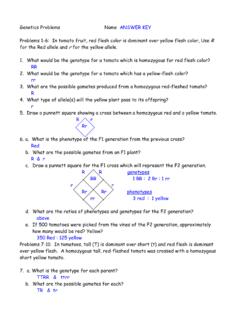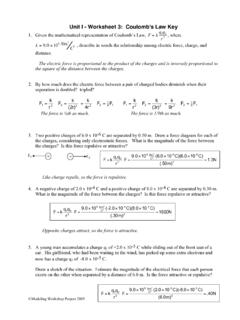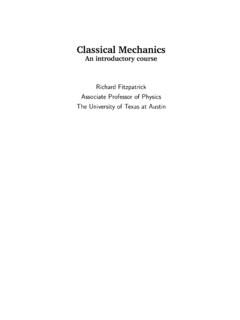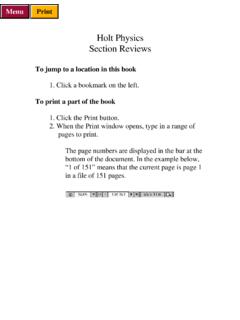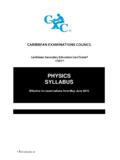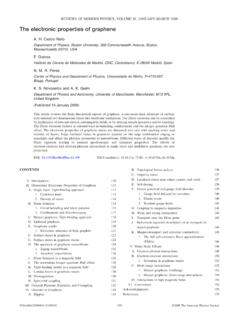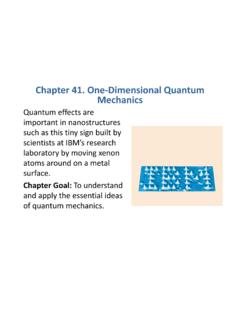Transcription of Skill and Practice Worksheets - LPS
1 Skill and Practice WorksheetsPhysics A First Course Skill and Practice WorksheetsPhysics A First CourseTeacher Resource CD-ROMC opyright 2005 CPO ScienceISBN 1-58892-144-11 2 3 4 5 6 7 8 9 - QWE - 09 08 07 06 05 All rights reserved. No part of this work may be reproduced or transmitted in any form or by anmeans, electronic or mechanical, including photocopying and recording, or by any informationstore or retrieval system, without permission in writing. For permission and other rights underthis copyright, please contact: CPO Science26 Howley Street,Peabody, MA 01960 (800) 932-5227 and Bound in the United States of AmericaCreditsCPO Science Curriculum Development TeamAuthor: Thomas Hsu, Presidents: Thomas Narro and Lynda PennellWriters: Scott Eddleman, Mary Beth Hughes, Stacy Kissel, Lainie Ives, Erik Benton, Mary Ann Erikson, and Patsy DeCosterGraphic Artists: Polly Crisman, Bruce Holloway, and Jim TraversCurriculum ContributorsDavid Bliss, Manos Chaniotakis, and James SammonsTechnical ConsultantsTracy Morrow and Julie DaltonSkill and Practice WorksheetsPhysics A First CourseUnit 1 System of Line Solving Boxes (template for solving problems) with Quantities and Solving with vs 's Second Due to Graphs of Motion Without Graphs of Motion With and Speed-Time Newton s Laws of and Kinetic and Conservation of MomentumUnit 2 Done against Advantage of Simple Displacement GravitationUnit 3 s s Structure of the DiagramsUnit 4 in Flowing and Chemical s FormulaUnit 5 an Electric 's s LawUnit 6 Inverse Square Gravitational Field Electric Fields and ForcesUnit 7 and Motion ScaleUnit 8 Intensity Law of Electromagnetic ShiftName.
2 Processes The scientific method is a process that helps you find answers to your questions about the world. The process starts with a question and your answer to the question based on experience and knowledge. This answer is called your hypothesis. The next step in the process is to test your hypothesis by creating experiments that can be repeated by other people in other places. If your experiment is repeated many times with the same results and conclusions, these findings become part of the body of scientific knowledge we have about the world. Read the following story. You will use this story to Practice using the scientific and Elena are preparing for a party. Maria realizes she forgot to fill the ice cube trays in order to have ice for the punch. Elena says that she remembers reading somewhere that hot water freezes faster than cold water. Maria is skeptical. She learned in her physics class that the hotter the liquid, the faster the molecules are moving.
3 Since hot water molecules have to slow down more than cold water molecules to become ice, Maria thinks that it will take hot water longer to freeze than cold girls decide to conduct a scientific experiment to determine whether it is faster to make ice cubes with hot water or cold water. Now, answer the following questions about the process they used to reach their a is the question that Maria and Elena want to answer by performing an experiment?Formulate a is Maria s hypothesis for the experiment? State why Maria thinks this is a good and conduct an : There are many variables that Maria and Elena must control so that their results will be valid. Name at least four of these to the Scientific Method1. Ask a Formulate a Design an experiment to test your Conduct an experiment to test your hypothesis and collect the data5. Analyze Make a tentative Test your conclusion, or refine the question, and go through each step again.
4 Page 2 of : List at least two types of measurements that Maria and Elena must make during their : If Maria and Elena want their friends at the party to believe the results of their experiment, they need to conduct the experiment so that others could repeat it. Write a procedure that the girls could follow to answer their and analyze dataThe girls conducted a carefully controlled experiment and found that after 3 hours and 15 minutes, the hot water had frozen solid, while the trays filled with cold water still contained a mixture of ice and water. They repeated the experiment two more times. Each time the hot water froze first. The second time they found that the the hot water froze in 3 hours and 30 minutes. The third time, the hot water froze in 3 hours and 0 is the average time that it took for hot water in ice cube trays to freeze? is it a good idea to repeat your experiments?
5 Make a tentative of the following statements is a valid conclusion to this experiment? Explain your reasoning for choosing a certain water molecules don t move faster than cold water water often contains more dissolved minerals than cold water, so dissolved minerals must help water freeze water can hold more dissolved oxygen than hot water, so dissolved oxygen must slow down the rate at which water temperature of water affects the rate at which it faster the water molecules are moving, the faster they can arrange themselves into the nice, neat patterns that are found in solid ice your conclusion or refine your questionMaria and Elena are very pleased with their experiment. They ask their teacher if they can share their findings with their science class. The teacher says that they can present their findings as long as they are sure their conclusion is correct. Here is where the last step (step 7) is important.
6 At the end of any set of experiments and before you present your findings, you want to make sure that you are confident about your work. s say that there is a small chance that the results of the experiment that Maria and Elena performed were affected by the kind of freezer they used in the experiment. What could the girls do to make sure that their results were not affected by the kind of freezer they used? 10. Conclusion 8(b) is a possible reason why temperature has an affect on how fast water freezes. Refine your original question for this experiment. In other words, create a question for an experiment that would prove or disprove conclusion (b).Name: Analysis Dimensional analysis is used to solve problems that involve converting between different units of the conversion factor you would choose to solve the following many inches are in 6 meters? many liters are in 10 gallons?
7 Kilometers is equal to how many miles? ,000,000 grams is equal to how many kilograms? grocery store just received a shipment of 200 cartons of eggs. Each carton holds one dozen eggs. If 12 eggs = 1 dozen, how many eggs did the store receive? marathon is miles long. How many kilometers is a marathon? (1 mile = km) speed limit on many interstate highways in the United States is 65 miles per hour. How many kilometers per hour is that? (1 mile = km) is going on a trip to London. She has saved $ in spending money. When she arrives in England, she goes to a bank to change her money into pounds. She is told that the exchange rate is 1 British pound = American dollars. The bank charges a fee of 4 pounds to change the money from dollars to pounds. How much money, in British pounds, will Ashley have if she changes all of her dollars to pounds? it is widely believed that Germany s Autobahn highway has no speed limit whatsoever, much of the highway has regulated speed limits of 130 km/hr or less, and in some places speed is limited to just 60 many miles per hour is 130 km/hr?
8 (1 mile = km) many miles per hour is 60 km/hr? England, a person s weight is commonly given in stones. One English stone is equal to 14 pounds. If an English friend tells you he weighs eleven stones, what is his weight in pounds?1 inches--------------------------- OR inches1 meter---------------------------1 liters------------------------ OR liters1 gallon------------------------1 miles---------------------------- OR miles1 kilogram1 gram------------------------------------ OR 1 kilogram-------------------------------- -----Name: System of MeasurementsIn ancient times, as trade developed between cities and nations, units of measurements were developed to measure the size of purchases and transactions. Greeks and Egyptians based their measurements of length on the human foot. Usually, it was based on the king s foot size. The volume of baskets was measured by how much goatskin they could hold.
9 Was this a reliable method of measurement? Why or why not?During the Renaissance, as scientists began to develop the ideas of physics and chemistry, they needed better units of measurements to communicate scientific data more efficiently. Scientists such as Kepler, Galileo, and Newton needed to prove their ideas with data based on measurements that other scientists could reproduce. In March 30, 1791, in Sevres, France, the French Academy of Sciences proposed a system that would be simple and consistent. The French Scientists based the units of length on a fraction of the distance between the Earth s equator and the North Pole along a line passing through Paris. The system s basic unit for measuring length was called a meter after the Greek word metron meaning measure. The set of equations below will show you how the meter is related to other units in this system of liter was defined as the new standard for volume.
10 One milliliter was equal to the volume of one cubic centimeter. The gram was defined as the standard for mass. The gram was defined as the mass of one milliliter of water at 4 , the length of a meter is defined as the distance light travels in a small fraction of a second. The kilogram is the current base unit for mass. A kilogram is defined as the mass of a certain lump of platinum and iridium that is kept in Paris under glass to protect it from chemical changes that could alter its mass. The metric system is also called the SI system, from the French Le System International d United States adopted the metric system in 1884. However, the adoption process has been slow, and many Americans still use the English System (feet, inches, and pounds). Since 1992, government agencies have been required to use the metric system in business transactions. The majority of people in the world use the metric system of measurements in their daily lives.
